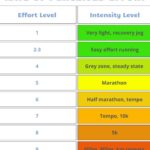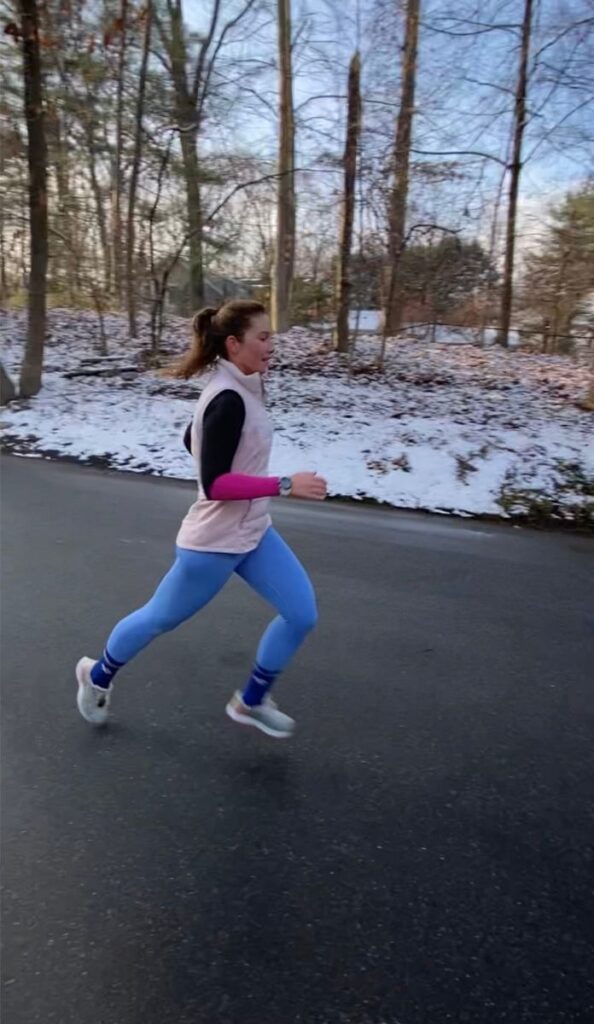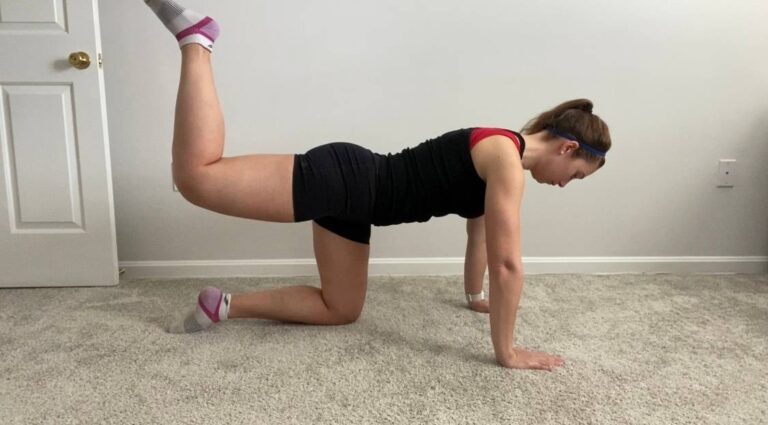RPE Running: When and Why to Focus on Running Off Effort
If you’re looking to become a stronger runner, RPE running, or Rate of Perceived Exertion running, is a skill that should be practiced throughout your training. Running by the rate of perceived exertion scale means you’re focused on your perceived effort, not pace. It’s a sure way to progress with your training while staying injury free, recovering well, and having fun.
Frequently Asked Questions about RPE Running:
What does RPE mean in running?
RPE stands for Rate of Perceived Exertion. It’s a universal tool that takes the focus off pace and allows runners to tune into their body and focus on how they’re feeling. Your exertion or effort is equated to your perceived intensity. The lower your perceived exertion, the easier your intensity is. On the other hand, the higher your perceived exertion, the harder the intensity is.
Because runners are focused on effort while RPE running, overall paces will vary. For example, your pace for four miles at an easy effort tomorrow may be different than your pace for four miles at an easy effort last week. This is completely fine. Lean into these pace variations and trust that listening to your body will help you improve, stay healthy, and avoid burnout. We go into detail later in this post about what variables contribute to changes in pace.
Every run in your training should have a purpose. RPE running is a great way to hold yourself accountable and make sure you’re running appropriately on any given day while listening to your body.
How do you calculate RPE?
Think of RPE as a scale from 1-10. 1 is the smallest amount of effort given and 10 is the maximum amount of effort given. As you move up the scale, you give more effort.
While you’re running, do a full body scan every few minutes and ask yourself:
- How am I feeling? Am I comfortable and relaxed or am I fatigued?
- How’s my breathing? Is it labored or can I take at least a few steps for every inhale and exhale?
- Am I able to have a conversation, sing a song, and laugh? Or do I feel like I can’t get a word out?
- How’s my mentality? Am I thinking positively and having fun or do I have negative thoughts?
- Do I feel like I could realistically keep this up for the remainder of the run or race?
- What does my heart rate feel like? Is my heart softly beating or is it pounding?
Your answers to these questions will help you figure out your RPE. For instance, if you are comfortable, relaxed, can sing a song, and your heart feels like it’s softly beating, you’re probably running at a 1-3 effort. But if you’re unable to speak, feeling fatigued and your heart is pounding quickly, you’re probably higher up on the RPE scale and not running at an easy effort.
My Rate of Perceived Exertion Guide gives you a breakdown of your effort and how you should feel at each level.
RPE Scale for Runners:
The chart below breaks down the RPE scale. You can see that for every effort level there is a corresponding intensity level.
While you’re running, think in terms of effort level. An easy effort run should fall between a 1-3 while a finishing kick in a 5K likely feels like a 9 or 10.
If you’re curious about how you should feel at each effort level, download my Rate of Perceived Exertion Guide.
Why to Focus on Running off Effort As Opposed to Pace:
1. Pace will change everyday
If you’re a consistent runner, you probably know that pace changes based on a multitude of factors. What feels easy one day may not feel easy the next. Knowing that this is normal will keep each run true to its purpose, improve your performance, and reduce the risk for injury, burnout, and overtraining.
If you’re heading out for an easy effort run, keep in mind easy is an effort, not a pace. Trying to hit the same paces for your easy days every single run will backfire. You’ll likely start to feel burned out, under-recovered, not see as much progress, and it’s possible you may not enjoy your training.
Some factors as to why paces change daily include:
- Terrain/elevation/altitude
- Weather
- How hydrated you are
- How fueled you are
- Quality of sleep
- Stress management
- Illness
- Cumulative fatigue
2. You become better at listening to your body
What you don’t want to do during a training run or race is constantly stare at your watch and think about your pace. This doesn’t sound like fun!
Taking time to practice RPE running during training teaches you what your body feels like at whatever effort you’re aiming for. For example, practicing a “half marathon effort” or a 6 out 10 effort during training will teach you what effort is manageable for 13.1 miles. By doing this, you will naturally and easily settle into your prescribed effort for your half marathon because you know what it feels like.
Personally, I like to cover my watch with electrical tape during some races. Instead of thinking about my pace and splits, I’m focused on how my body feels and what effort is attainable that day.
Related: Why I Tape My Garmin Watch During Races
3. You’ll likely make progress faster
Again, if you aim to hit the same pace for each type of run, you’re not giving your body time to recover and adapt to your training. The equation “stress + rest = growth” holds true with RPE running. Speed workouts and long runs are “stress”, while “rest” includes easy and recovery runs and rest days. Letting go of pace and keeping effort in the forefront of your mind will aid with recovery and prepare you well for your next hard effort run.
All in all, stop looking at your watch. Listen to your body, trust it, and have fun!
When Should I Run by Rate of Perceived Exertion?
Honestly, I believe a runner should always focus on RPE running. Sure, there’s a time and place for pace work, like nailing down your goal race pace during peak training. However, effort should always be in the forefront of your mind.
1. Winter and summer running
When the temperature takes a drastic turn and reaches an extreme high or low, focus on your effort. Paces that felt easy in the spring and fall will feel harder in winter and summer. For instance, running is more challenging in the winter because our bodies work harder to keep organs warm. With less oxygen and blood moving to our extremities, our muscles become less efficient at using oxygen that is present in our muscles.
Related: 9 Common Winter Running Mistakes (And What to Do Instead)
Related: Running in the Heat: How to Make it More Bearable (and Fun!)
2. Trail running and running at altitude
Trail running and road running are very different. With rugged terrain and steep climbs, trail running is about giving the appropriate effort for the route directly in front of you. Running five miles on the trails typically takes longer than five miles on the roads. Because of this, it’s important to shift focus from running a certain pace to running based on your effort.
This is also true if you’re running at altitude. With less oxygen delivered to your muscles, your body has to work harder. Paces that feel easier at sea level will feel more challenging at altitude.
Related: Trail Running for Beginners: What to Know Before You Get Started
3. Races
You won’t know how you feel on race day until you cross the starting line. Remember, pace will change day to day, so being in tune with your body while running a race can lead to stronger race executions and setting PRs.
If your race pace doesn’t feel manageable on race day, adjust until you’re giving an effort that does. Ignoring how your body feels and running a pace that isn’t realistic for that day can lead to hitting the wall, slowing down, and blowing up during the later miles.
4. Hills
Hills are a perfect place to focus on perceived effort. They naturally slow you down (and increase your heart rate), so refrain from looking at your watch while ascending a hill. While running up a hill either during training or a race, you want to maintain your effort. So, this will mean slowing down slightly until that effort is achieved.
If you aim to maintain your pace while ascending a hill, you end up giving more effort than you need to. Ultimately, this can mean using too much energy too soon and possibly hitting the wall or slowing down later on.
5. During a structured training cycle
Let’s say you’re training for a marathon, for instance. You’re likely going to have a lot of cumulative fatigue built up throughout the cycle. During peak training, you may describe your legs as feeling “heavy” or “dead” on easy or recovery days. Because of this, your pace may differ from an easy or recovery run earlier in training.
Don’t fret – this doesn’t mean your fitness is going backwards. What’s most important is that your RPE is still in that 1-3 zone on a scale of 1-10. Another thing to keep in mind is that having “heavy” legs during an easy run doesn’t mean your RPE is higher. Sure, you may feel tired from more mileage, but your perceived exertion is still low and within the 1-3 range.
Recap for RPE Running:
Clearly, running by rate of perceived exertion is a sure way to progress with your training. Additionally, RPE running helps with staying injury free, recovering well, and having fun. RPE running is versatile and can be used while running on the roads, trails, and at altitude. If you’re eager to become a stronger runner, RPE running should be an underlying focus throughout your training.
Interested in RPE Running?
I would love to help you run by rate of perceived exertion! Email me at [email protected] or check out my Run Coaching Services page to learn more.
Comment below:
Do you include RPE running in your training?
If so, do you prefer RPE running over running by pace?














